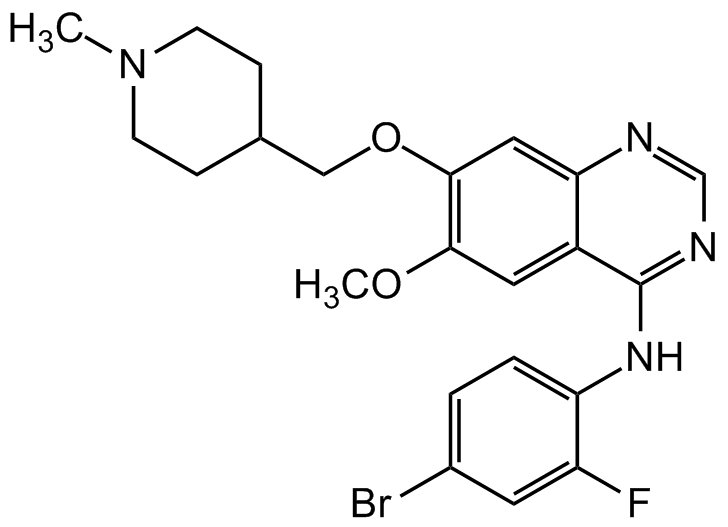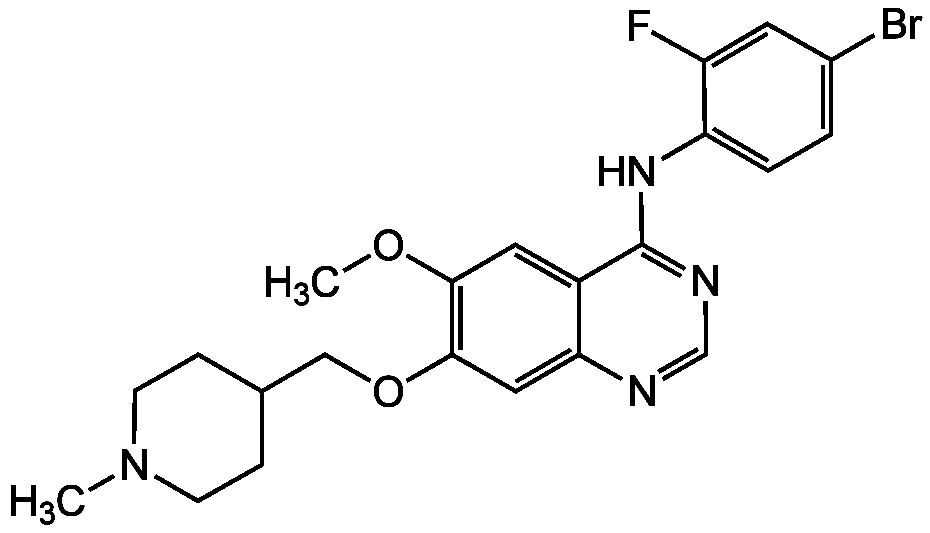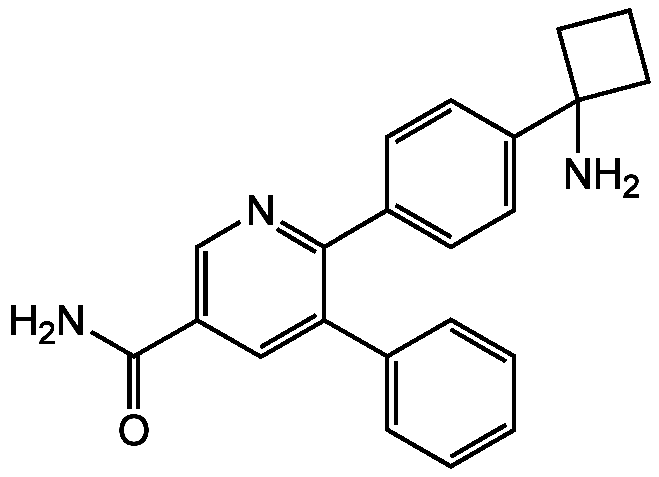
Chemical Structure
Vandetanib
CDX-V0043
CAS Number443913-73-3
Product group Chemicals
Estimated Purity>98%
Molecular Weight475.4
Overview
- SupplierChemodex
- Product NameVandetanib
- Delivery Days Customer10
- CAS Number443913-73-3
- CertificationResearch Use Only
- Estimated Purity>98%
- Hazard InformationWarning
- Molecular FormulaC22H24BrFN4O2
- Molecular Weight475.4
- Scientific DescriptionChemical. CAS: 443913-73-3. Formula: C22H24BrFN4O2. MW: 475.4. Vandetanib is an orally available, ATP mimetic small molecule tyrosine kinases inhibitor that targets vascular endothelial growth factor receptor-2 (VEGFR-2), VEGFR-3 and epidermal growth factor receptor (EGFR), REarranged during Transfection (RET) and slightly VEGFR-1. Inhibition of these tyrosine kinases blocks multiple intracellular signaling pathways involved in tumor growth, proliferation, progression and angiogenesis. It inhibits RET, VEGFR2, VEGFR3, VEGFR1, EGFR, PDGFRbeta, Tie-2, and FGFR1 in cell-free assays (IC50s = 34, 40, 110, 1,600, 500, 1,100, 2,500, and 3,600 nM, respectively). It also binds to 142 additional kinases in a panel of 442 kinases (Kds = 4.6-7,900 nM). Vandetanib (1 and 2.5 microM) induces apoptosis, autophagy, ROS and cell cycle arrest at the G0/G1 phase and has anti-proliferative properties in several cancer cell lines and in in vivo cancer models. Formulations containing vandetanib have been used in the treatment of medullary thyroid cancer. - Vandetanib is an orally available, ATP mimetic small molecule tyrosine kinases inhibitor that targets vascular endothelial growth factor receptor-2 (VEGFR-2), VEGFR-3 and epidermal growth factor receptor (EGFR), REarranged during Transfection (RET) and slightly VEGFR-1. Inhibition of these tyrosine kinases blocks multiple intracellular signaling pathways involved in tumor growth, proliferation, progression and angiogenesis. It inhibits RET, VEGFR2, VEGFR3, VEGFR1, EGFR, PDGFRbeta, Tie-2, and FGFR1 in cell-free assays (IC50s = 34, 40, 110, 1,600, 500, 1,100, 2,500, and 3,600 nM, respectively). It also binds to 142 additional kinases in a panel of 442 kinases (Kds = 4.6-7,900 nM). Vandetanib (1 and 2.5 microM) induces apoptosis, autophagy, ROS and cell cycle arrest at the G0/G1 phase and has anti-proliferative properties in several cancer cell lines and in in vivo cancer models. Formulations containing vandetanib have been used in the treatment of medullary thyroid cancer.
- SMILESBrC(C=C1F)=CC=C1NC2=NC=NC3=CC(OCC4CCN(C)CC4)=C(OC)C=C32
- Storage Instruction2°C to 8°C
- UNSPSC12352200





